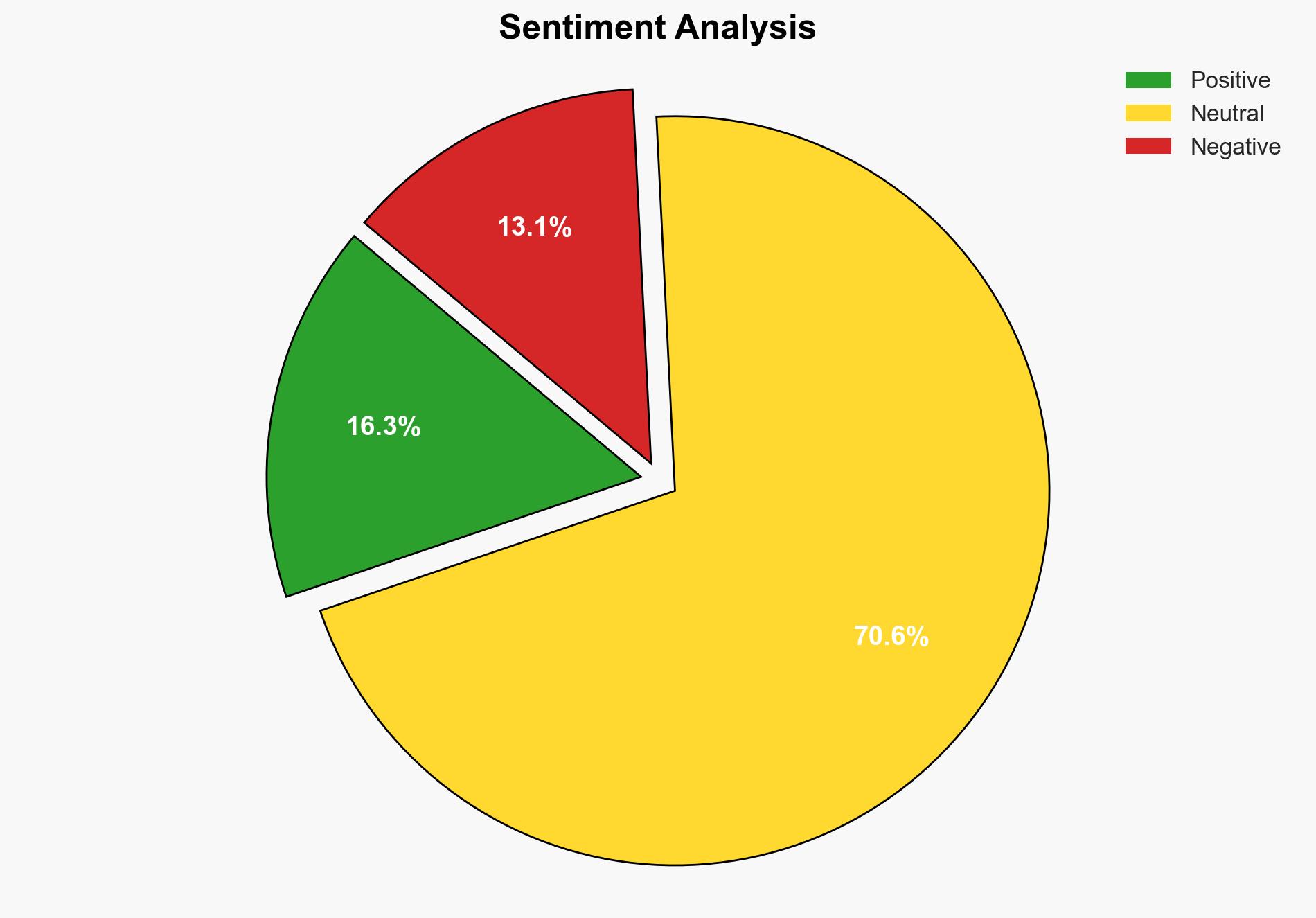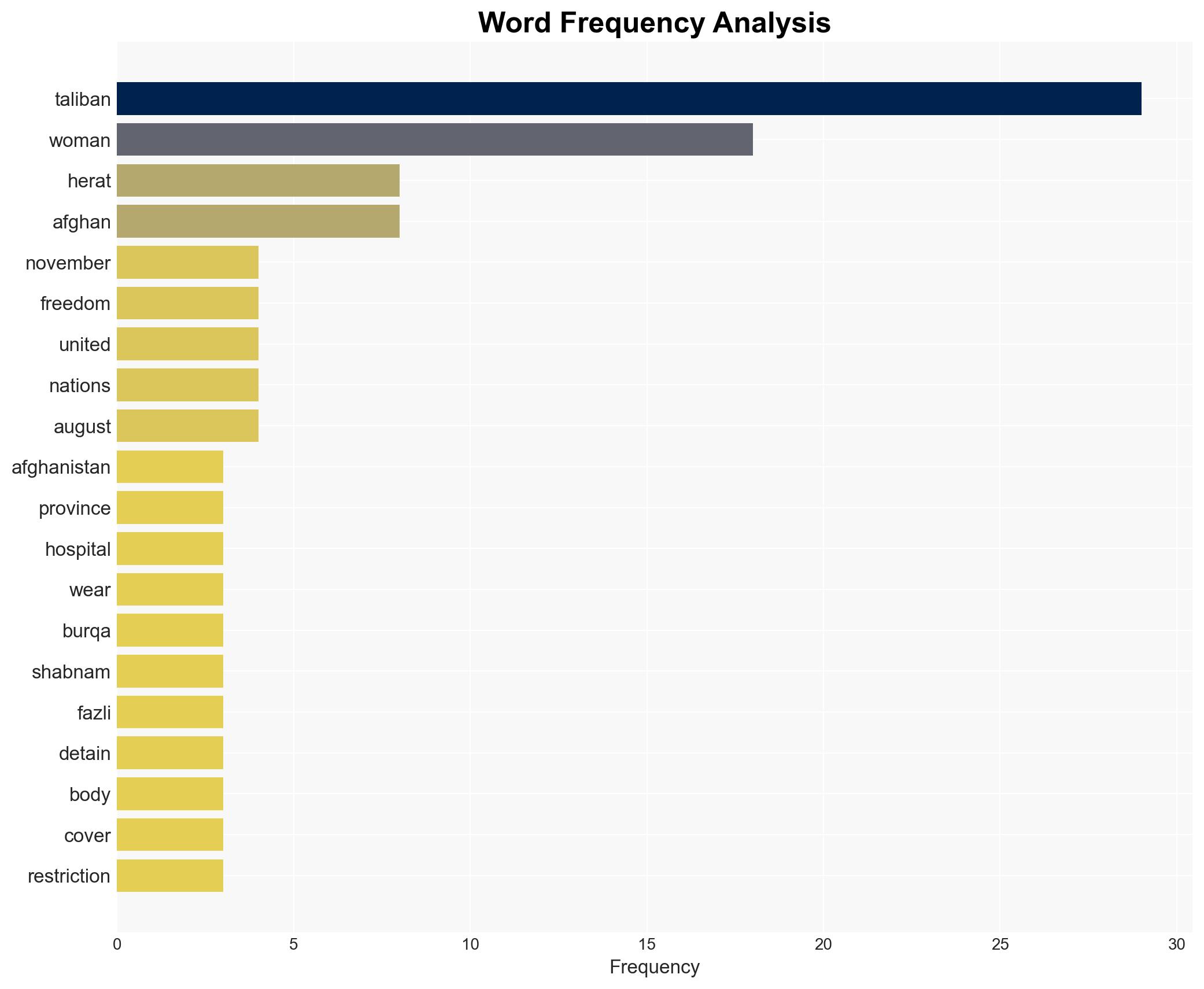Talibans Mandatory Burqa in Herat Assaults Womens Autonomy – Human Rights Watch
Published on: 2025-11-19
AI-powered OSINT brief from verified open sources. Automated NLP signal extraction with human verification. See our Methodology and Why WorldWideWatchers.
Intelligence Report: Taliban’s Mandatory Burqa Policy in Herat and Its Implications
1. BLUF (Bottom Line Up Front)
The Taliban’s enforcement of mandatory burqa policies in Herat represents a strategic maneuver to consolidate control over women’s autonomy, with broader implications for human rights and regional stability. The most supported hypothesis is that this policy is part of a systematic effort to reinforce gender-based control. Confidence Level: High. Recommended action includes diplomatic pressure and support for local and international advocacy groups to counteract these measures.
2. Competing Hypotheses
Hypothesis 1: The mandatory burqa policy is a deliberate strategy by the Taliban to reinforce patriarchal control and suppress women’s rights, aligning with their historical governance style.
Hypothesis 2: The policy is a reactionary measure to perceived threats to Taliban authority, aiming to preemptively quell dissent and maintain social order by enforcing strict moral codes.
Hypothesis 1 is more likely due to consistent patterns of gender-based restrictions across Taliban-controlled regions, historical precedence, and the systematic nature of these policies.
3. Key Assumptions and Red Flags
Assumptions: The Taliban leadership is unified in its approach to women’s rights. The international community’s response will influence Taliban policies.
Red Flags: Increased reports of detentions and arrests for dress code violations. Potential misinformation campaigns by the Taliban to justify policies as culturally necessary.
4. Implications and Strategic Risks
The enforcement of the burqa policy could lead to increased isolation and marginalization of women, exacerbating humanitarian issues. Politically, it may strengthen internal Taliban cohesion but risk international isolation and sanctions. Economically, it could deter foreign investment and aid. Informationally, it may fuel anti-Taliban narratives and resistance movements.
5. Recommendations and Outlook
- Engage in diplomatic efforts to pressure the Taliban to reverse restrictive policies.
- Support local and international NGOs advocating for women’s rights in Afghanistan.
- Monitor for potential escalations in human rights abuses and prepare contingency plans.
- Best-case scenario: International pressure leads to policy reversal and improved women’s rights.
- Worst-case scenario: Further entrenchment of gender apartheid and increased regional instability.
- Most-likely scenario: Continued enforcement of policies with sporadic international condemnation and limited tangible change.
6. Key Individuals and Entities
Shabnam Fazli (female surgeon detained), Taliban leadership, United Nations human rights experts.
7. Thematic Tags
Counter-Terrorism, Human Rights, Gender Equality, Afghan Politics
Structured Analytic Techniques Applied
- ACH 2.0: Reconstruct likely threat actor intentions via hypothesis testing and structured refutation.
- Indicators Development: Track radicalization signals and propaganda patterns to anticipate operational planning.
- Narrative Pattern Analysis: Analyze spread/adaptation of ideological narratives for recruitment/incitement signals.
Explore more:
Counter-Terrorism Briefs ·
Daily Summary ·
Support us





